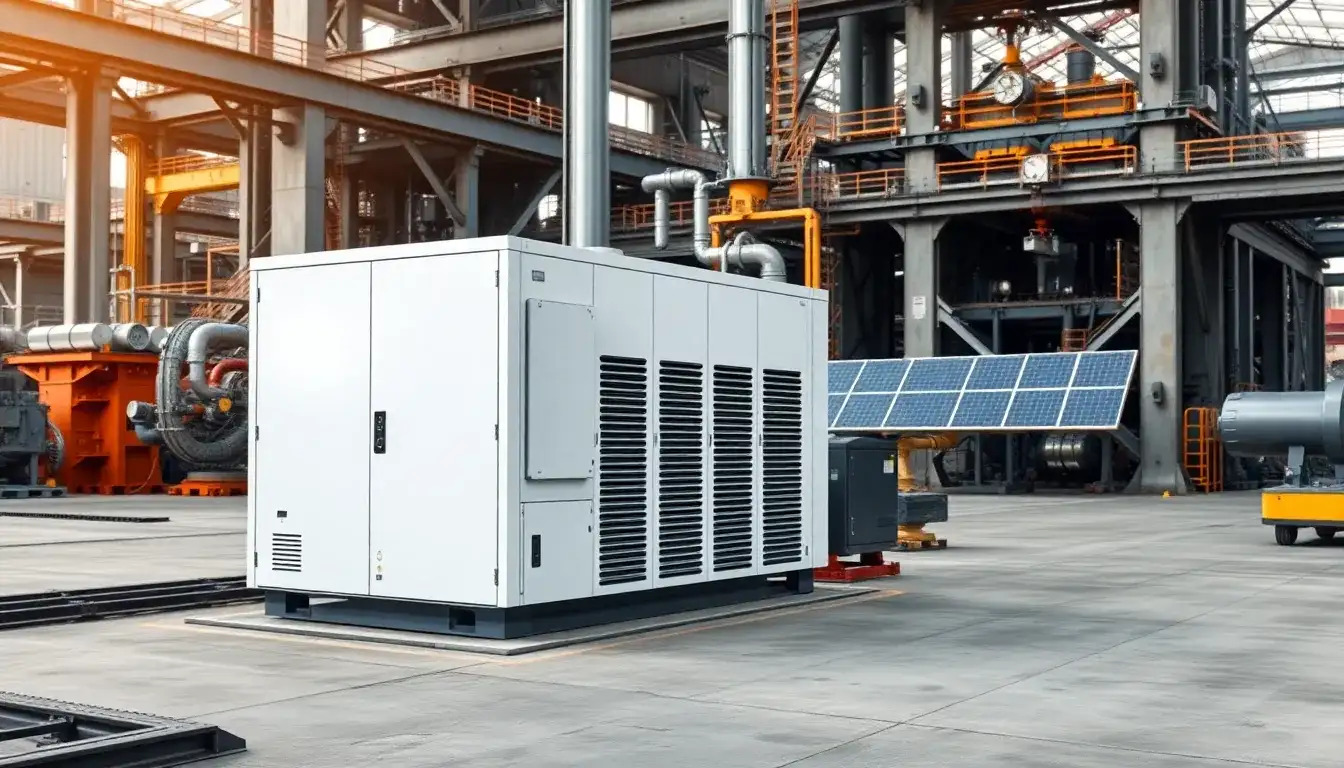
Steel and New Energy Storage: This Series of String Storage Power Stations Has Operated for Over 10,000 Hours
Located at Nanjing Steel Group and supported by China Three Gorges Energy Investment and Lingchu Energy, the Nanjing Nanshan 61MW/123MWh energy storage station (hereafter referred to as the “Nanshan Energy Storage Station”) has recently celebrated a significant milestone. Since achieving full capacity grid connection in January 2024, the station has operated stably for over 10,000 hours, transferring more than 10 million kilowatt-hours of peak load electricity. This achievement has resulted in substantial savings on electricity costs, maximizing the economic benefits of the energy storage station while enhancing regional energy utilization. Additionally, it has participated in demand response, delayed power system upgrades, and provided auxiliary power services.
It is noteworthy that the Nanshan Energy Storage Station has achieved a system efficiency of 90.29%, as certified by a third-party authoritative testing agency, the State Grid Electric Power Research Institute. This figure not only redefines the economic viability of commercial and industrial energy storage but also positions the Nanshan Energy Storage Station as a benchmark case for the deep integration of traditional heavy industry and new energy technologies.
The operator of the Nanshan Energy Storage Station, China Three Gorges Energy, expressed satisfaction with the operational results. The project dynamically responds to user-side peak load demands, aligning supply and demand more effectively. Lingchu Energy has been involved from the design phase to operational support, successfully integrating the energy storage system into the production process. The long-term operation has maximized the investment returns of the “energy storage + steel” model.
How has such high efficiency—over 90%—been achieved? This success is attributed to Lingchu Energy’s in-depth optimization of the technical architecture and meticulous project design.
From a technical architecture perspective, Lingchu Energy adopted a string-type solution. The Ocean energy blue sea integrated storage cabinet employs a “one cluster, one management” design, breaking free from traditional centralized solutions and eliminating circulating flow impacts. The thermal management system uses a flexible and intelligent cooling strategy that adjusts based on cell temperature, environmental conditions, and operating status, allowing the liquid cooling unit’s daily energy consumption to drop to as low as 45.91 kWh. The 3S full-stack self-research capability ensures harmonious system response, with an energy management system (EMS) utilizing AI algorithms to predict production loads in real-time, thereby dynamically optimizing charging and discharging strategies and enhancing power supply reliability.
Furthermore, to improve system efficiency, Lingchu Energy has installed photovoltaic panels on each energy storage cabinet to support station electricity needs. Additionally, every streetlight at the station is equipped with photovoltaic panels and small wind turbines, which help reduce electricity losses and enhance operational efficiency through renewable energy sources.
In response to the steel industry’s stringent safety requirements, Lingchu Energy has implemented a comprehensive safety system with a “three-level fire prevention + five-level fuse” mechanism, along with proactive measures such as cluster-level thermal management and intelligent monitoring, as well as passive measures like fault isolation. By utilizing AI large model local deployment, the Ocean energy blue sea integrated storage cabinet can provide safety warnings for thermal runaway over two months in advance, with a detection accuracy for internal short circuits exceeding 95%.
Additionally, the project has developed a battery health big data analysis module that applies data analysis technology to battery health management, enabling real-time monitoring of each cell’s status with a 0.3-second response time and 97% accuracy in lifespan prediction.
As the first 100-megawatt-hour level string-type user-side energy storage project in the country, the Nanshan Energy Storage Station has validated the scalability potential of this technology. The string-type energy storage system deployed at commercial users is flexible in configuration and closely aligned with actual user needs. The modular design allows companies to expand capacity in stages, avoiding significant upfront capital investments, while the liquid cooling system effectively improves charging and discharging efficiency, increasing overall lifecycle discharge by 4%-5% compared to centralized solutions.
Lingchu Energy’s achievements are not limited to the Nanshan Energy Storage Station. According to data from the High-tech Industry Research Institute (GGII), in 2024, Lingchu Energy ranked among the top two in string-type energy storage system shipments with over 1GWh of installed capacity, and was among the top ten in industrial and commercial energy storage system integration. The company has successfully executed landmark projects, including the Meigang 50MW/100MWh energy storage station and the Binhai 200MW/400MWh independent shared energy storage station.
In the Meigang project, 252 Ocean 400L liquid cooling storage cabinets generated an income of 32.8 million yuan in the first year. The Binhai project, currently the largest string-type grid-side energy storage station, utilizes 1,080 energy blue sea storage cabinets to participate in grid peak shaving and frequency regulation, enhancing the renewable energy absorption capacity of the owner.
With a foundation in string-type energy storage solutions and a reliance on modular products and intelligent management, Lingchu Energy is helping clients reshape industrial energy management paradigms. Looking ahead, the company aims to become an “energy partner” for clients, providing comprehensive services from energy supply to carbon asset management for energy-intensive industries like steel, supporting more owners in transitioning to low-carbon production, and contributing wisdom and strength to the green transformation of industry.







